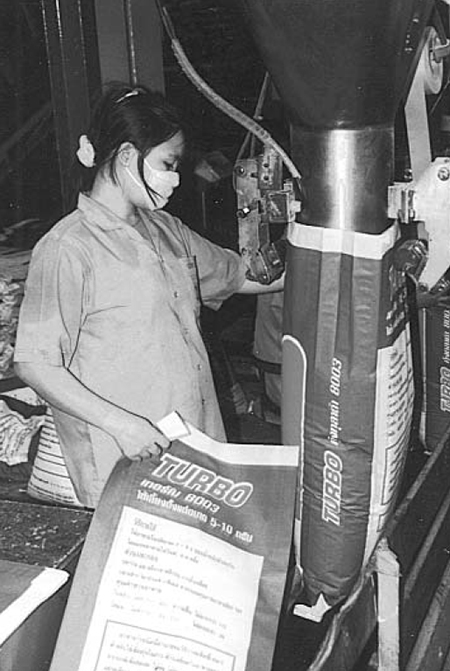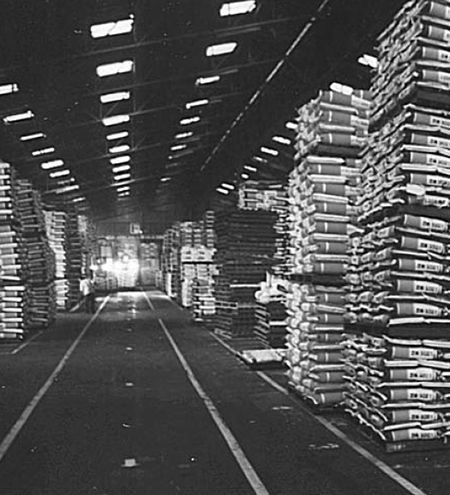Organic aquaculture should promote the use of naturally occurring microorganisms for the maintenance of optimum ecosystem health and stability

As animal-food production systems expand and intensify, the demand and competition for available resources – including land, water, fossil fuels, labor, finance, fertilizer, and nutrient inputs – also increase. It follows, therefore, that if the aquaculture sector is to successfully compete with other stakeholders (including terrestrial agriculture and humans) for resources and sustain its double-digit growth rate into the third millennium, those resources must be used both wisely and efficiently.
In this regard, it is imperative that the aquaculture sector be seen as having little or no adverse effect upon the environment. It must be viewed by society as having a positive benefit to the global food supply and economy.
Not surprisingly, there has been a growing trend within the aquaculture community (particularly operations in industrialized economies) for the development of greener, cleaner, and more environmentally sustainable aquaculture production systems and dietary feeding regimes.
Emerging role of ecotechnology
Although “biotechnology” is generally viewed by the aquaculture industry as the only means of further increasing global food production and food security, there are a growing number of people who view “ecotechnology” as a possible alternative.
For example, it has been suggested that if human communities were to deploy all the ecotechnologies now available (energy efficiency, pollution control, waste management, recycling, cradle-to-cradle products, etc.), we could enjoy twice as much material welfare while consuming only half as many natural resources and causing half as much pollution and waste. Emerging ecotechnologies, now worth U.S. $600 billion per year, are on a par with the global car industry.
New solutions
Clearly, there will be no single solution to our needs, but rather a combination of biotechnological and ecotechnological solutions. Their mix will depend on the different economic, environmental and social constraints placed upon agricultural/aquacultural producers and consumers. For example, recent mad cow disease and dioxin scares in Europe led to renewed interest in organic farming, including “organic” aquaculture and feeding practices.
Although the production of organic aquaculture produce is still very much in its infancy, it has been estimated that the largest markets for organically produced foods are currently in the European Union, the United States, and Japan. The reported value of retail organic foods sales within Germany, Japan, and the U.S. in 1999 was U.S. $2.6 billion, $4 billion and $8 billion, respectively.
Organic standards

Despite this exciting market opportunity, the major challenge facing the growth of the organic aquaculture sector will be the development of suitable production standards. They will need to be internationally recognized by the organic community, but also practical and economically viable for use by farmers and aquafeed manufacturers alike.
The Food and Agriculture Organization/World Health Organization Codex Alimentarius Commission, the highest international body on food standards, adopted international “guidelines for production, processing, labeling, and marketing of organically produced foods” in 1999. According to Codex:
- Organic agriculture is one among the broad spectrum of methodologies which are supportive of the environment;
- Organic production systems are based on specific and precise standards of production which aim at achieving optimal agroecosystems which are socially, ecologically, and economically sustainable;
- “Organic” is a labeling term that denotes products have been produced in accordance with organic production standards and certified by a duly-constituted certification body or authority;
- Organic agriculture is based on minimizing the use of external inputs, avoiding the use of synthetic fertilizers and pesticides;
- Organic agriculture is holistic production management systems which promote and enhance agroecosystem health, including biodiversity, biological cycles, and soil biological activity;
- Organic production systems are designed to recycle wastes of plant and animal origin in order to return nutrients to the land, thus minimizing the use of non-renewable resources;
- Organic production systems are designed to rely on renewable resources in locally organized agricultural systems;
- Organic production systems are designed to promote the healthy use of soil, water, and air, as well as minimize all forms of pollution thereto that may result from agricultural practices.
It is important to note that requirements for organically produced foods differ from those for other agricultural products, in that certified production procedures are an intrinsic part of the identification and labeling of such products. Clearly, the use of an organic feed during the farm production cycle is not sufficient to label a product as organic.
The fishmeal dilemma
Numerous issues need to be addressed if international organic standards are to be developed for aquaculture (see pages 6-7 in the June 2000 Advocate). Among these is the use of fishmeal and fish oil within aquafeeds, and whether a product derived from wild-caught animals can be certified. Apart from the fact that wild fish cannot be strictly compared with terrestrial wild game (which are not recognized as organic under Codex guidelines), it should suffice that the feedstuffs are produced from sustainably managed wild fisheries and non-food-grade fishery products, are free from synthetic additives and unwanted contaminants, and are fed to farmed aquatic species with naturally piscivorous feeding habits.
Further challenge
The real challenge in the long run will be for the organic aquaculture sector to be seen as a recycler of valuable nutrients and resources from the larger agriculture and livestock production sector. Organic aquaculture would consequently be viewed as having a very positive net benefit to society and the environment.
Wherever possible, organic aquaculture production systems should also promote the use of naturally occurring microorganisms for the maintenance of optimum ecosystem health and stability, as well as an additional source of dietary nutrients. Additional measures could include the polyculture of animal and plant species with complementary feeding habits, promotion of nutrient fixation and nutrient recycling within the culture system, and water reuse.
(Editor’s Note: This article was originally published in the April 2001 print edition of the Global Aquaculture Advocate.)
Now that you've finished reading the article ...
… we hope you’ll consider supporting our mission to document the evolution of the global aquaculture industry and share our vast network of contributors’ expansive knowledge every week.
By becoming a Global Seafood Alliance member, you’re ensuring that all of the pre-competitive work we do through member benefits, resources and events can continue. Individual membership costs just $50 a year. GSA individual and corporate members receive complimentary access to a series of GOAL virtual events beginning in April. Join now.
Not a GSA member? Join us.
Author
-

Albert G.J. Tacon, Ph.D.
Aquatic Feeds and Nutrition Consultant
45-122 Halliday Place
Kaneohe, HA 96744 USA
Tagged With
Related Posts

Aquafeeds
Aquaculture’s input efficiency shines as FIFO ratios improve
The latest Fish In:Fish Out (FIFO) ratios calculated by IFFO – The Marine Ingredients Organisation shows that every kilogram of wild fish utilized in aquafeeds results in a total of 4.55 kilos of farmed fish produced.

Aquafeeds
Biosecurity protocols needed for shrimp feeds, feeding practices
Shrimp aquafeeds – live, fresh or formulated – should not be an entry point of potential pathogens to the shrimp and/or to their culture systems.

Intelligence
Food matters: A comparative analysis of fish, income and food supply
Authors analyzed the role played by fish and fishery products – from aquaculture or from wild capture fisheries – in the diets of the richest and poorest countries. Fish and fishery products have an essential function in human nutrition.

Aquafeeds
Trial finds extruded feeds superior to steamed pellets
A feeding trial in Hawaii tested the nutritive value of extruded feeds in comparison pelleted feeds for Pacific white shrimp.

